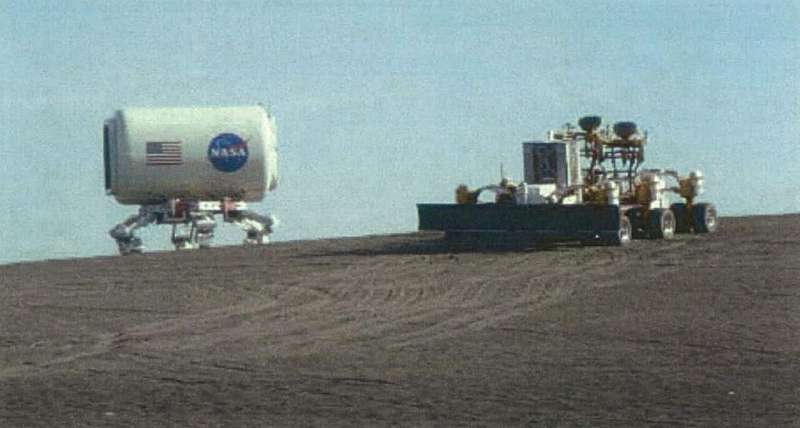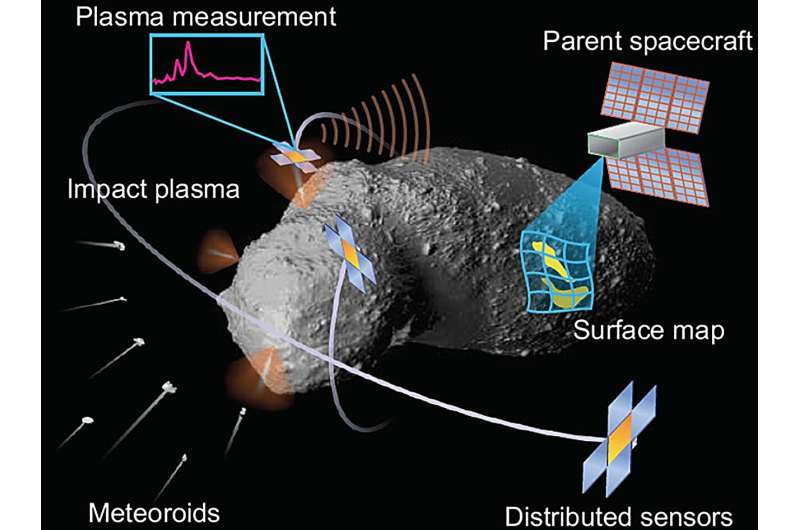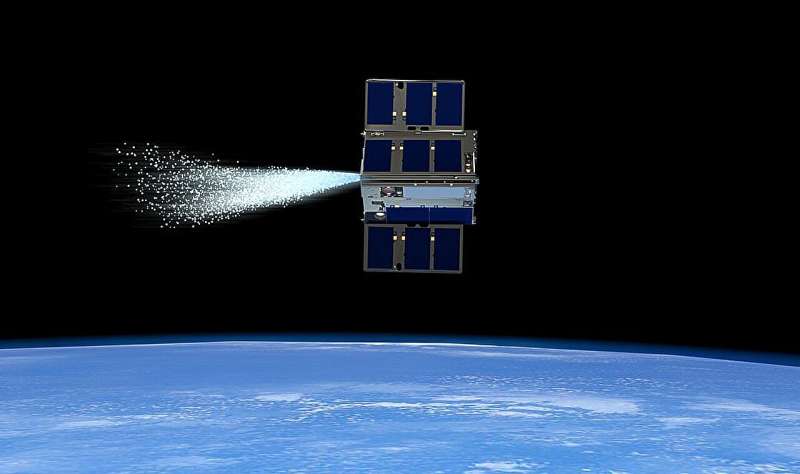NASA Shares Use Requirements With Commercial Destination Partners
Monday, 08 July 2024 20:22 the space agency hosted a meeting to share knowledge with companies developing future commercial destinations at the agencys Johnson Space Center in Houston. The discussion could aid in developing safe, reliable, innovative, and cost-effective space stations. Industry representatives from more than 20 companies attended.
The program focused on the space agencys planned use of commercial de
the space agency hosted a meeting to share knowledge with companies developing future commercial destinations at the agencys Johnson Space Center in Houston. The discussion could aid in developing safe, reliable, innovative, and cost-effective space stations. Industry representatives from more than 20 companies attended.
The program focused on the space agencys planned use of commercial de UArizona's first satellite built by students is ready for launch
Monday, 08 July 2024 20:22 The sun barely peeks over the horizon as a suitcase-like transport box exits Steward Observatory, home to the University of Arizona Department of Astronomy. Inside, held snugly in place by foam, is precious cargo: CatSat, the university's first satellite built entirely by students.
After loading it into the back of the car, Shae Henley and Walter Rahmer, both engineering students at UArizo
The sun barely peeks over the horizon as a suitcase-like transport box exits Steward Observatory, home to the University of Arizona Department of Astronomy. Inside, held snugly in place by foam, is precious cargo: CatSat, the university's first satellite built entirely by students.
After loading it into the back of the car, Shae Henley and Walter Rahmer, both engineering students at UArizo Discovering Milan: A Comprehensive Guide to Exploring the Milan Cathedral and Beyond
Monday, 08 July 2024 20:22 Milan, Italy's fashion and financial capital, is a city that effortlessly combines history, culture, and modernity. From its stunning architecture to its world-renowned shopping districts, Milan offers a plethora of experiences for every traveler. At the heart of this bustling metropolis lies the Milan Cathedral, or Duomo di Milano, an architectural marvel that has captivated visitors for cen
Milan, Italy's fashion and financial capital, is a city that effortlessly combines history, culture, and modernity. From its stunning architecture to its world-renowned shopping districts, Milan offers a plethora of experiences for every traveler. At the heart of this bustling metropolis lies the Milan Cathedral, or Duomo di Milano, an architectural marvel that has captivated visitors for cen Scientists reveal the density differences of sub-Neptunes due to resonance
Monday, 08 July 2024 20:22 The majority of stars in our galaxy host planets, with sub-Neptunes, which are planets sized between Earth and Neptune, being the most common. Estimating their density has been a significant challenge for scientists because the method used to measure their mass highlights two distinct populations: dense and less dense. Recent work by the NCCR PlanetS, the University of Geneva (UNIGE), and the Un
The majority of stars in our galaxy host planets, with sub-Neptunes, which are planets sized between Earth and Neptune, being the most common. Estimating their density has been a significant challenge for scientists because the method used to measure their mass highlights two distinct populations: dense and less dense. Recent work by the NCCR PlanetS, the University of Geneva (UNIGE), and the Un Cosmic Shielding protects Nvidia Ai hardware in upcoming Spacex launch
Monday, 08 July 2024 20:22 Cosmic Shielding Corporation (CSC), providers of the worlds leading space radiation shielding technologies, will be utilized to develop an AI-capable space computer that uses the Nvidia Jetson Orin NX GPU. This will mark the first time a GPU from the latest Nvidia Orin ecosystem has been sent to space and will be part of the SpaceX Falcon 9 rocket launch from Vandenberg Space Force Base, Califor
Cosmic Shielding Corporation (CSC), providers of the worlds leading space radiation shielding technologies, will be utilized to develop an AI-capable space computer that uses the Nvidia Jetson Orin NX GPU. This will mark the first time a GPU from the latest Nvidia Orin ecosystem has been sent to space and will be part of the SpaceX Falcon 9 rocket launch from Vandenberg Space Force Base, Califor Leaf Space enables Sateliot to scale without significant capex in the ground segment
Monday, 08 July 2024 20:22 Sateliot, the first company to operate a low-Earth orbit (LEO) nanosatellite constellation with 5G IoT standards and that extends coverage of Mobile Telecom Operators to any place in the planet, has successfully integrated its satellite communication stack with Leaf Space's Ground Segment as a Service (GSaaS) Network. This milestone is crucial for the upcoming Transporter-11 mission by SpaceX, d
Sateliot, the first company to operate a low-Earth orbit (LEO) nanosatellite constellation with 5G IoT standards and that extends coverage of Mobile Telecom Operators to any place in the planet, has successfully integrated its satellite communication stack with Leaf Space's Ground Segment as a Service (GSaaS) Network. This milestone is crucial for the upcoming Transporter-11 mission by SpaceX, d Sidus Space and Stennis complete key objectives of in-space payload mission
Monday, 08 July 2024 20:22 Sidus Space, Inc. (NASDAQ: SIDU) has announced that in partnership with the space agency Stennis Space Center, the primary objectives of the the space agency Autonomous Satellite Technology for Resilient Applications (ASTRA) payload mission were successfully met on July 1, 2024.
Collaborating closely with the the space agency Stennis Autonomous Systems Laboratory (ASL) team, Sidus Space co
Sidus Space, Inc. (NASDAQ: SIDU) has announced that in partnership with the space agency Stennis Space Center, the primary objectives of the the space agency Autonomous Satellite Technology for Resilient Applications (ASTRA) payload mission were successfully met on July 1, 2024.
Collaborating closely with the the space agency Stennis Autonomous Systems Laboratory (ASL) team, Sidus Space co JAXA to support work on commercial space station technologies
Monday, 08 July 2024 19:58

Space Force preparing for the age of proliferated low Earth orbit satellite networks
Monday, 08 July 2024 19:32

Pentagon greenlights $140 billion ICBM program despite cost overruns
Monday, 08 July 2024 19:03

A handy attachment could make lunar construction a breeze
Monday, 08 July 2024 17:59
Moving large amounts of regolith is a requirement for any long-term mission to the moon or Mars. But so far, humanity has only sent systems capable of moving small amounts of soil at a time—primarily for sample collection. Sending a large, dedicated excavator to perform such work might be cost-prohibitive due to its weight, so why not send a bulldozer attachment to a mobility unit already planned for use on the surface?
That was the thought process of an interdisciplinary team of engineers from NASA and the Colorado School of Mines. They came up with the Lunar Attachment Node for Construction and Excavation—or LANCE.
LANCE is an attachment to NASA's Chariot rover prototype, which was originally designed to be the primary mobility system for astronauts returning to the moon. However, it was designed in 2007, when the original NASA Lunar Architecture plan was to establish a permanent lunar base in 2019.
Swarms of orbiting sensors could map an asteroid's surface
Monday, 08 July 2024 17:10
It seems like every month a new story appears announcing the discovery of thousands of new asteroids. Tracking these small body objects from ground and even space-based telescopes helps follow their overall trajectory. But understanding what they're made of is much more difficult using such "remote sensing" techniques.
To do so, plenty of projects get more up close and personal with the asteroid itself, including one from Dr. Sigrid Elschot and her colleagues from Stanford, which was supported by NASA's Institute for Advanced Concepts back in 2018. It uses an advanced suite of plasma sensors to detect an asteroid's surface composition by utilizing a unique phenomenon—meteoroid impacts.
The project, known as the Meteroid Impact Detection for Exploration of Asteroids (MIDEA), has an architecture that has become more prominent as of late—a swarm of smallsats coordinated around a mothership. In this case, the smallsats are plasma sensors with one specific purpose: to detect characteristics of the plume of debris from the asteroid after a meteoroid hits it.
CubeSat propulsion technologies are taking off
Monday, 08 July 2024 17:08
CubeSats are becoming ever more popular, with about 2,400 total launched so far. However, the small size limits their options for fundamental space exploration technologies, including propulsion. They become even more critical when mission planners design missions that require them to travel to other planets or even asteroids.
A team from Khalifa University of Science and Technology in Abu Dhabi recently released a review in Aerospace of the different CubeSat propulsion technologies currently available—let's look at their advantages and disadvantages.
The paper breaks propulsion systems into four categories: Chemical, Kinetic, Electrical, and "Propellant-less." Chemical systems are the traditional rockets most people think of when launching satellites—they burn chemicals together and expel gas created by the fire to produce thrust. Kinetic systems use things like cold gas, where instead of reacting two chemicals together, they simply push gas molecules out to propel themselves in the opposite direction.
SpaceX Secures NASA Contract for COSI Space Telescope Launch
Monday, 08 July 2024 16:09 "NASA has selected Space Exploration Technologies Corporation (SpaceX) of Hawthorne, California, to provide launch services for the COSI (Compton Spectrometer and Imager) mission."
The firm-fixed-price contract is valued at approximately $69 million and includes launch services and associated mission costs. The COSI mission is scheduled to launch in August 2027 aboard a SpaceX Falcon 9 roc
"NASA has selected Space Exploration Technologies Corporation (SpaceX) of Hawthorne, California, to provide launch services for the COSI (Compton Spectrometer and Imager) mission."
The firm-fixed-price contract is valued at approximately $69 million and includes launch services and associated mission costs. The COSI mission is scheduled to launch in August 2027 aboard a SpaceX Falcon 9 roc 


